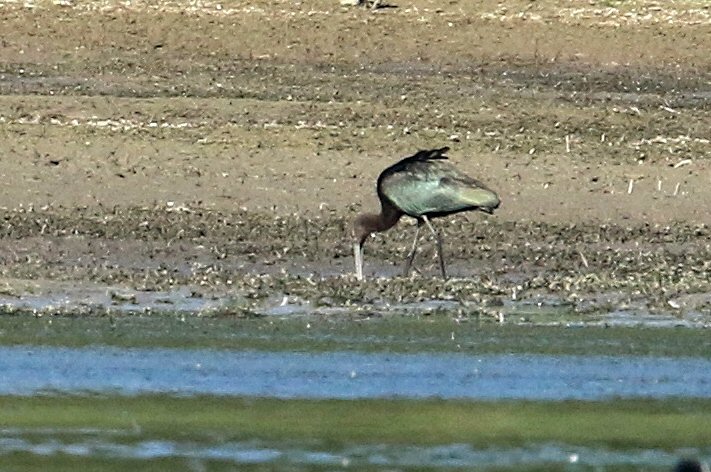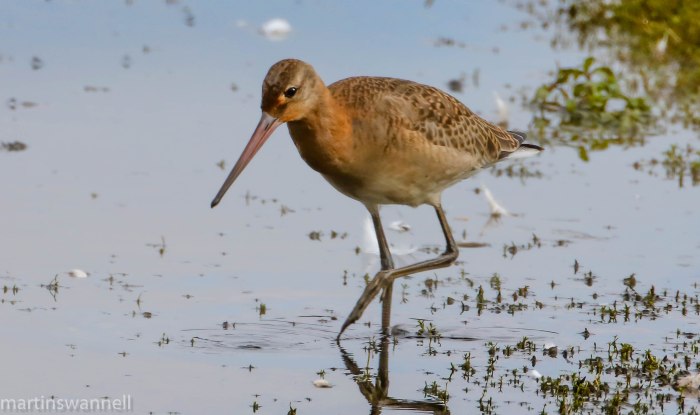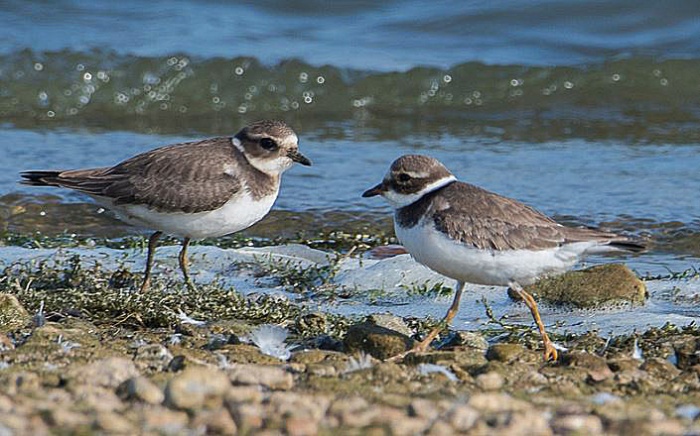Under the influence of a south to south-westerly airstream for the majority of the week, the county enjoyed largely dry weather with occasional heavy showers and temperatures in the low twenties on a couple of occasions. With the shorter day lengths and the nights rapidly drawing in, the amount of daylight time for birding is quickly being eroded – but the waiting game was over, at least for some, on 28th.
Still in the vicinity of the dam and sailing club, the Ruddy Shelduck remained at Pitsford Res as Pintail numbers there increased to fifteen by 29th, along with one at Daventry CP on the same date. The only Red-crested Pochards were also at Pitsford Res, where there were up to three all week and at Stanford Res, where two were present on 30th.

Stanford Res also added itself to the list of localities producing Great White Egrets this week with a fly-over moving south-west on 26th. Elsewhere it was business as usual with singles appearing settled at Hollowell Res and Deene Lake as well as two still at Pitsford Res all week, although the Summer Leys individual was nowhere to be seen during the period.

The dearth of rarities was finally broken – somewhat spectacularly – this week with the appearance of Northamptonshire’s fourth-ever Glossy Ibis at Daventry CP on the morning of 28th. A seriously glossy adult, true to form it did a bunk shortly after its discovery, allowing only a handful of quick off the mark locals to catch up with it before its hasty departure to the south.


A Black-necked Grebe found at the same locality at the same time (and still present the following day) provided little in the way of a consolation prize for those who missed it.

On the raptor front notables this week included a Marsh Harrier at Blueberry Farm, Maidwell 25th, an Osprey lingering at Ditchford GP’s Irthlingborough Lakes & Meadows on 29th, which was possibly the same individual seen leaving Clifford Hill GP and flying over Far Cotton, Northampton on 30th and the autumn’s first Merlin at Harrington AF on 25th. Hobbies were still very much in evidence with two regularly at Summer Leys LNR between 24th and 27th and singles at Stanwick GP on 24th and over Higham Ferrers on 27th and a Peregrine visited Summer Leys on 30th.


Wader numbers continued to dwindle. The long-staying juvenile Grey Plover at Boddington Res had departed on 24th, while the only Ringed Plovers were up to six at Pitsford Res between 25th and 28th.

Eight Curlews flew east at Stanford Res on 24th, around twenty Black-tailed Godwits were flushed by a female Sparrowhawk at Ditchford GP’s Irthlingborough Lakes & Meadows and flew off west on 25th and six dropped in at Summer Leys just before dusk on 27th.

The week’s only Ruff was an apparently injured bird at Daventry CP on 28th-29th, while Common Sandpipers were reduced to singles at Stanford Res on 24th, Naseby Res on 26th and Pitsford Res on 26th-27th with two at Boddington Res on 27th.

A Green Sandpiper was at Pitsford Res on 25th, two were at Naseby Res the following day and up to three were at both Deene Lake until 27th and Daventry CP on 28th-29th. Eight Common Snipe at Deene Lake between 25th and 27th and three at Summer Leys on the latter date were the only ones reported this week.
Scarce gulls were in short supply, with a first-winter Caspian Gull at Boddington Res on 24th and a second calendar year individual at Pitsford Res the following day, while small numbers of Yellow-legged Gulls included two near Thenford and two at Boddington Res on 24th, one at Pitsford Res on 25th and six again at Boddington Res on 27th. Single juvenile Common Terns remained at Ditchford GP until 24th and at Hollowell Res until 28th.
Scarce migrant passerines were also difficult to find this week, with the only Whinchats being one at Hollowell Res on 24th and two at Blueberry Farm the following day, while the three Stonechats were still at the latter locality on the same date and a single Northern Wheatear remained at Summer Leys until 27th.

































 Gull ID masterclass. Don’t miss it …
Gull ID masterclass. Don’t miss it …


















